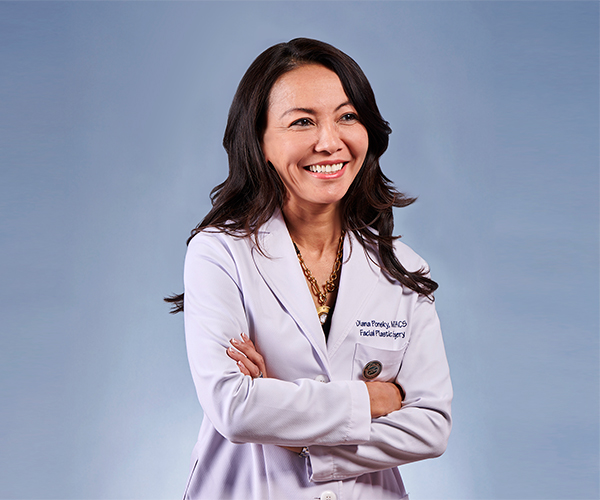The emergency room has a rhythm all its own — monitors humming, phones buzzing, intercom calls for doctors breaking in at regular intervals. It's noisy, but no one on staff at Akron General Medical Center seems to notice. Huddled teams discuss their work. Nurses walk or wheel patients into and out of exam rooms creating a near-constant state of motion.
Dr. Nick Jouriles has a choice to make. Who gets first priority? The patient with abdominal pain, the accident victim or the elderly woman with breathing problems? He grabs the green binder with the elderly woman's intake forms.
"You have to move and act fast on incomplete data," Jouriles says, describing one of the unique challenges of emergency medicine. "There are times when you can't wait."
He will see an average of 30 patients in an eight-hour shift. The most he has seen in one day is 51. On slow days, the number may be closer to 20.
Some emergencies come wrapped in the cloak of the mundane, like the patient who came in with ankle pain and had a cardiac arrest on-site. Others are masked like the trauma patient whose car accident was actually caused by a heart attack.
"The final diagnosis is not always apparent," Jouriles says. "And sometimes it's something you would never expect."
Inside the exam room, the upbeat doctor (who talks almost as quickly as he walks) changes his tempo. He takes time to put his first patient of the day at ease. Asking questions and listening intently, he discovers she is a dialysis patient whose chills and cough are not responding to the oral antibiotics prescribed by her primary-care physician. He checks her heart and breathing and then orders a chest X-ray to confirm his suspicion of pneumonia.
While waiting for the X-ray, Jouriles moves on. He treats the man with a work-related shoulder injury and then the young woman who appears to be in excruciating pain.
He apologizes to her for asking hard questions about whether her injuries were caused by abuse and looks for evidence of broken bones or other trauma. Ruling out any immediate life threat, he offers her pain meds and referrals to doctors who can provide long-term care. Noticing that she is a smoker, he encourages her to quit. "Bad for your back, bad for your wallet," he tells her.
Jouriles works with the constant tension of moving patients through emergency as quickly as possible and taking as much time as he can with each one of them.
"You can't shortchange that initial exchange with the patient," he says. "Rush it and you'll never get what you need to give them what they need."
He dictates his notes for transcription, checks on his first patient's X-rays and writes up an order to admit her to the hospital before moving on to order an ultrasound for a young man with a history of blood clots in his legs.
ER docs don't get the opportunity to bond with patients over time the way their cohorts in most other specialties do. This leaves little time for thank yous from patients when their crises are over, Jouriles notes.
"Still it is really a privilege to help people in their time of need," he says.
As chair of emergency medicine at Akron General Medical Center and at Northeast Ohio Medical University, Jouriles' influence extends beyond immediate patient care. He manages the department (on multiple campuses) and oversees its residency training program. His education is impressive; his experience extensive and intense.
After growing up in University Heights, Jouriles earned his bachelor's degree in molecular biology from the University of Pennsylvania, graduated from the medical school at Case Western Reserve, studied internal medicine at Dartmouth for three years and spent two more years training in emergency medicine at Denver General Hospital.
His Denver experience was life changing. "It was the pinnacle of everything in ER at the time," he says.
As a resident there, Jouriles was part of a team that helped to define the specialty of emergency medicine and set the standard for trauma care in the 1980s. They handled the city's most demanding emergencies, including an unusually high volume of drug overdoses and gunshot and stab wounds. They became known as "The Knife and Gun Club," after being immortalized in a 1989 photo-essay book with the same name by award-winning photojournalist Eugene Richards.
Jouriles' dramatic memories of Denver include the Christmas morning when a family came in at 5 a.m. with gunshot wounds after arguing over their presents, and the night he did 15 to 20 peritoneal lavages (an invasive procedure to look for internal bleeding after trauma) — five of them, simultaneously. (These have been replaced by more powerful CT scanners and bedside ultrasounds, Jouriles notes.)
After Denver, Jouriles returned to Northeast Ohio doing stints at University Hospitals and MetroHealth Medical Center before settling in at Akron General. He started the emergency medicine curriculum at Case Western Reserve University's medical school and continues to write curriculum for his residents at NEOMED.
While Akron General is a Level 1 Trauma Center with a well-trained trauma team available 24/7, the hospital typically sees more heart attacks and strokes. Its emergency department treats between 110 and 210 patients each day at its main campus and another 100 on suburban campuses in Stow, Montrose and Lodi. This month, the hospital opens its fifth ER in Green.
Jouriles is ready for anything in the emergency room, knowing that ER treatment delays have a significant effect on outcomes. "The biggest scare is the person in the waiting room," he says. "Until we've seen the last person in the waiting room, we're not caught up."



